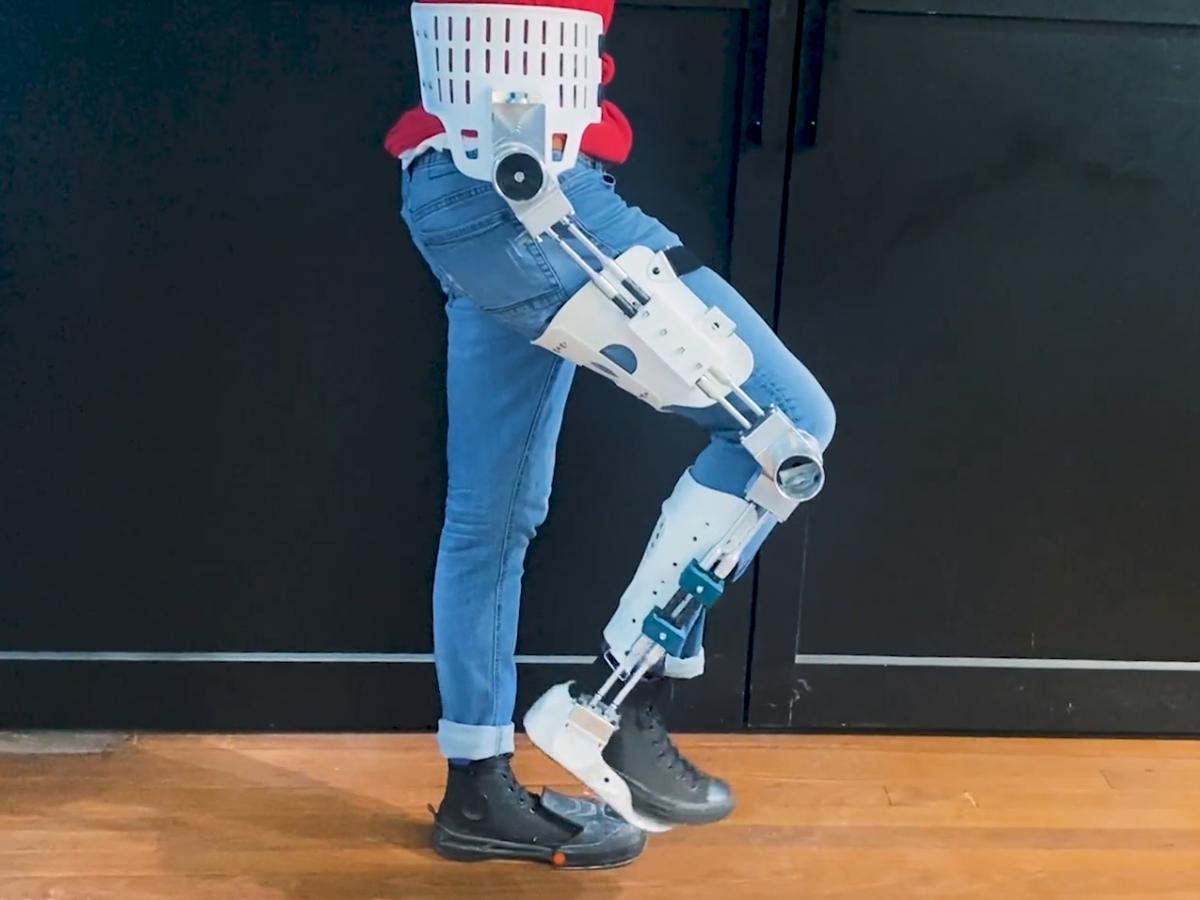Student-developed technology aids future society

Exoskeleton
An exoskeleton that aids people with mobility problems, a six-legged bioinspired robot paired with a laser scanner for vision and drones, one of which can help clear power lines and another that could be used to monitor bushfires, are some of the projects on display at Ingenuity.
“Ingenuity is the University of Adelaide’s annual interactive expo of final-year projects by the architecture, engineering, computer and mathematical sciences students,” said Professor Katrina Falkner, Executive Dean of the Faculty of Engineering, Computer and Mathematical Sciences.
“The range of projects on display demonstrates how our students have applied their skills and experience gained during their courses to develop practical solutions to real-world problems.
“Our students, as some of tomorrow’s leaders in their chosen fields, are already working on technology advances and solutions for our future society.”
Ingenuity 2021 which is held on Tuesday 26 October 2021, 9.30am – 3.30pm at the Adelaide Convention Centre, is a platform for students to professionally present their work to a wide range of audiences.
The lower body assistive exoskeleton on display was developed by Jordan Curnow, Sarah Damin, Joshua Koutsouridis, Matthew Michael, Doan Nguyen, Rijul Ramkumar.
The exoskeleton aims to help users with mobility issues by aiding with daily movements such as sitting, standing, and walking. The device which has sensors to predict the user’s individual gait, can learn and adapt to the user over time. Motors at the hip and knees assist according to the task being completed. The low-weight exoskeleton is made from CNC aluminium components and carbon fibre tubing, and is adjustable to ensure that the lower body is comfortably supported.
“The range of projects on display demonstrates how our students have applied their skills and experience gained during their courses to develop practical solutions to real-world problems."Professor Katrina Falkner
Other projects on display include:
- A six-legged bioinspired robot paired with a 360-degree laser scanner for vision which is being used to help map the ecosystem and animals of Naracoorte Caves. It is programmed to map and move intelligently around caves and is small enough to fit into confined spaces and to minimise damage;
- A robot which clears kite strings from overhead power lines. The team has been working directly with an Indonesian power company. Kite flying is very popular there but causes 93% of power blackouts; and
- An Unmanned Aerial Vehicle (UAV) which can carry a small sensor payload, such as a smoke detector, thermometer, or microphone which could be used for low-cost bushfire monitoring with minimal risk to human operators.
Ingenuity is attended by several thousand people each year: primary and high school students, industry representatives, University staff and students, and the general public. They have the opportunity to engage with university students, share in their experiences, and learn more about studying architecture, engineering, computer and mathematical sciences at the University of Adelaide.
Further information about Ingenuity 2021 is available at: www.ecms.adelaide.edu.au/ingenuity
Media Contact:
Crispin Savage, Senior Communication and Media Adviser, The University of Adelaide. Mobile: +61 (0)481 912 465, Email: crispin.savage@adelaide.edu.au
